
The economy of Mozambique is $14.396 billion by gross domestic product as of 2018, and has developed since the end of the Mozambican Civil War (1977–1992). In 1987, the government embarked on a series of macroeconomic reforms, which were designed to stabilize the economy. These steps, combined with donor assistance and with political stability since the multi-party elections in 1994, have led to dramatic improvements in the country's growth rate. Inflation was brought to single digits during the late 1990s, although it returned to double digits in 2000–02. Fiscal reforms, including the introduction of a value-added tax and reform of the customs service, have improved the government's revenue collection abilities.

The cashew tree is a tropical evergreen tree that produces the cashew seed and the cashew apple accessory fruit. The tree can grow as tall as 14 metres, but the dwarf cultivars, growing up to 6 m (20 ft), prove more profitable, with earlier maturity and greater yields. The cashew seed is commonly considered a snack nut eaten on its own, used in recipes, or processed into cashew cheese or cashew butter. Like the tree, the nut is often simply called a cashew. Cashew allergies are triggered by the proteins found in tree nuts, and cooking often does not remove or change these proteins.

Mtwara Region is one of Tanzania's 31 administrative regions. The regional capital is the municipality of Mtwara. Mtwara Region is home to one of the most infuluencial people in Tanzania, the Makonde. Mtwara is home to Tanzania's 4th president Benjamin Mkapa and is home to an array of influencial artists. The boundary with Mozambique to the south is formed by the Ruvuma River. To the west, Mtwara is bordered by Ruvuma Region, to the north by Lindi Region, and to the east is the Indian Ocean.

Bình Phước is a province of Vietnam. It is located in the Southeast region of the country, to the north of Hồ Chí Minh City. It shares a border with Cambodia.

Mtwara is the capital city of Mtwara Region in southeastern Tanzania. In the 1940s, it was planned and constructed as the export facility for the disastrous Tanganyika groundnut scheme, but was somewhat neglected when the scheme was abandoned in 1951. The city is spread out over a large area planned to accommodate up to 200,000 people. The present population is around 108,000. As part of the development associated with the failed Tanganyika groundnut scheme, Mtwara features a deep-water port that can accommodate ocean-going vessels, and a range of large municipal buildings, including a post office. Recent improvements in the port made it possible for big container ships to berth there.

Agriculture in Nigeria is a branch of the economy in Nigeria, providing employment for about 35% of the population as of 2020. As reported by the FAO, agriculture remains the foundation of the Nigerian economy, despite the presence of oil in the country. It is the main source of livelihood for most Nigerians. The Agricultural sector is made up of four sub-sectors: Crop Production, Livestock, Forestry and Fishing.
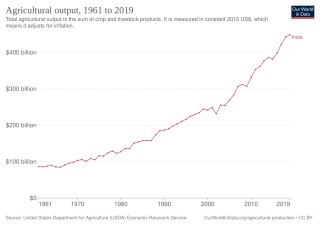
The history of agriculture in India dates back to the Indus Valley civilization. India ranks second worldwide in farm outputs. As per 2018, agriculture employed more than 50% of the Indian work force and contributed 17–18% to country's GDP.
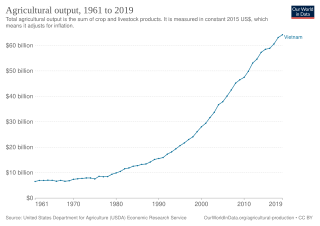
In 2004, agriculture and forestry accounted for 21.8 percent of Vietnam's gross domestic product (GDP), and between 1994 and 2004, the sector grew at an annual rate of 4.1 percent. Agriculture's share of economic output has declined in recent years, falling as a share of GDP from 42% in 1989 to 26% in 1999, as production in other sectors of the economy has risen. However, agricultural employment was much higher than agriculture's share of GDP; in 2005, approximately 60 percent of the employed labor force was engaged in agriculture, forestry, and fishing. Agricultural products accounted for 30 percent of exports in 2005. The relaxation of the state monopoly on rice exports transformed the country into the world's second or third largest rice exporter. Other cash crops are coffee, cotton, peanuts, rubber, sugarcane, and tea.

Agriculture is one of the main industries in Taiwan. It contributes to the food security, rural development and conservation of Taiwan. Around 24% of Taiwan's land is used for farming.
Uganda's favorable soil conditions and climate have contributed to the country's agricultural success. Most areas of Uganda have usually received plenty of rain. In some years, small areas of the southeast and southwest have averaged more than 150 millimeters per month. In the north, there is often a short dry season in December and January. Temperatures vary only a few degrees above or below 20 °C but are moderated by differences in altitude.

Benin is predominantly a rural society, and agriculture in Benin supports more than 70% of the population. Agriculture contributes around 35% of the country's gross domestic product (GDP) and 80% of export income. While the Government of Benin (GOB) aims to diversify its agricultural production, Benin remains underdeveloped, and its economy is underpinned by subsistence agriculture. Approximately 93% of total agricultural production goes into food production. The proportion of the population living in poverty is about 35.2%, with more rural households in poverty (38.4%) than urban households (29.8%). 36% of households depend solely upon agricultural (crop) production for income, and another 30% depend on crop production, livestock, or fishing for income.
Tobacco production in Malawi is one of the nation's largest sources of income. As of 2005, Malawi was the twelfth-largest producer of tobacco leaves and the 7th largest global supporter of tobacco leaves. As of 2010, Malawi was the world's leading producer of burley leaf tobacco. With the decline of tobacco farms in the West, interest in Malawi's low-grade, high-nicotine tobacco has increased. Today, Malawian tobacco is found in blends of nearly every cigarette smoked in industrialized nations including the popular and ubiquitous Camel and Marlboro brands. It is the world's most tobacco dependent economy. In 2013 Malawi produced about 133,000 tonnes of tobacco leaf, a reduction from a maximum of 208,000 tonnes in 2009 and although annual production was maintained at similar levels in 2014 and 2015, prices fell steadily from 2013 to 2017, in part because of weakening world demand but also because of declining quality.

Coffee production in Tanzania is a significant aspect of its economy as it is Tanzania's largest export crop. Tanzanian coffee production averages between 30,000 and 40,000 metric tons annually of which approximately 70% is Arabica and 30% is Robusta.

The Kerala State Cashew Development Corporation Limited or KSCDC is a model employer in the field of cashew industry mainly to protect the interest of workers and to provide maximum employment to its workers and to give statutory benefits like minimum wages, bonus, etc. prevailing in the cashew industry. It is headquartered in Kollam city, called "Cashew Capital of the World". The head office is situated at Cashew House, Mundakkal in Kollam City, Kerala. KSCDC was incorporated in July 1969 and started Commercial activities in the year 1971 as a company fully owned by the Government of Kerala. Corporation has now more than a turn over of Rs. 2.50 billion. A Central Export Promotion Council for Cashew, Cashew Export Promotion Council of India (CEPCI) is situated at Kollam city.
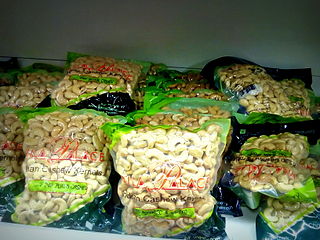
The Cashew business in Kollam is based in the eponymous city, which is known as the Cashew Capital of the World. Kollam is the largest processed cashew exporter in the world. As of 2011 there were more than 600 cashew processing units in the city. About 800,000 tonnes of raw cashews are imported to the city for processing every year. 80% of India's export quality cashew kernels were prepared in Kollam. Kollam remained as the cashew capital of the world for decades since 1930s.
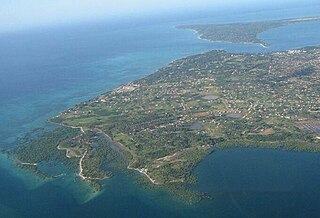
The Mtwara Port was built during the British Colonial times in the city of Mtwara in southern Tanzania. The harbor at the Port of Mtwara was deepened during the colonial times by the British in 1948-1954, and a railway line was built connecting the port, as part of the Tanganyika groundnut scheme. Due to the failure of the scheme the port immediately lost value and the railway line was removed. The port was functional but underutilized for many years due to poor transport infrastructure, However, in the years of 2010-2011 the increased activity in oil and gas natural resources energy exploration caused a surge on operations. The Mtwara port is also an integral part of the Mtwara Development Corridor project and has recently saw major upgrades. The port also has a special economic zone attached to it and In December 2015 Alistair Freeports Limited injected $700,000 to upgrade the Export processing zone around the port area.

Sisal production in Tanzania began in the late 19th century by the German East Africa Company. Sisal was continually produced during the German administration and the British administration and was the colony's largest export highly prized for use in cordage and carpets worldwide. At the time of independence in 1961, Tanzania was the largest exporter of Sisal in the world and the industry employed over 1 million farmers and factory workers.

Agriculture is the main part of Tanzania's economy. As of 2016, Tanzania had over 44 million hectares of arable land with only 33 percent of this amount in cultivation. Almost 70 percent of the poor population live in rural areas, and almost all of them are involved in the farming sector. Land is a vital asset in ensuring food security, and among the nine main food crops in Tanzania are maize, sorghum, millet, rice, wheat, beans, cassava, potatoes, and bananas. The agricultural industry makes a large contribution to the country's foreign exchange earnings, with more than US$1 billion in earnings from cash crop exports.

Areca nut production in India is dominant in the coastal region within 400 kilometres (250 mi) from the coast line, and also in some other non-coastal states of India. Areca nut, a tropical crop, is popularly known as betel nut, as its common usage in the country is for mastication with betel leaves. It is a palm tree species under the family of Arecaceae. It has commercial and economic importance not only in India but also in China and Southeast Asia.
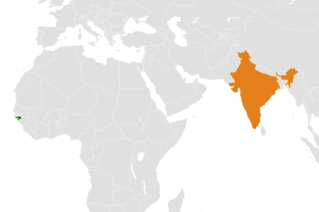
Guinea-Bissau–India relations refers to the international relations that exist between Guinea-Bissau and India. The embassy of India in Dakar, Senegal is concurrently accredited to Guinea-Bissau. India opened an Honorary Consulate in Bissau on 28 May 2010. Guinea-Bissau has no diplomatic mission in India.






















